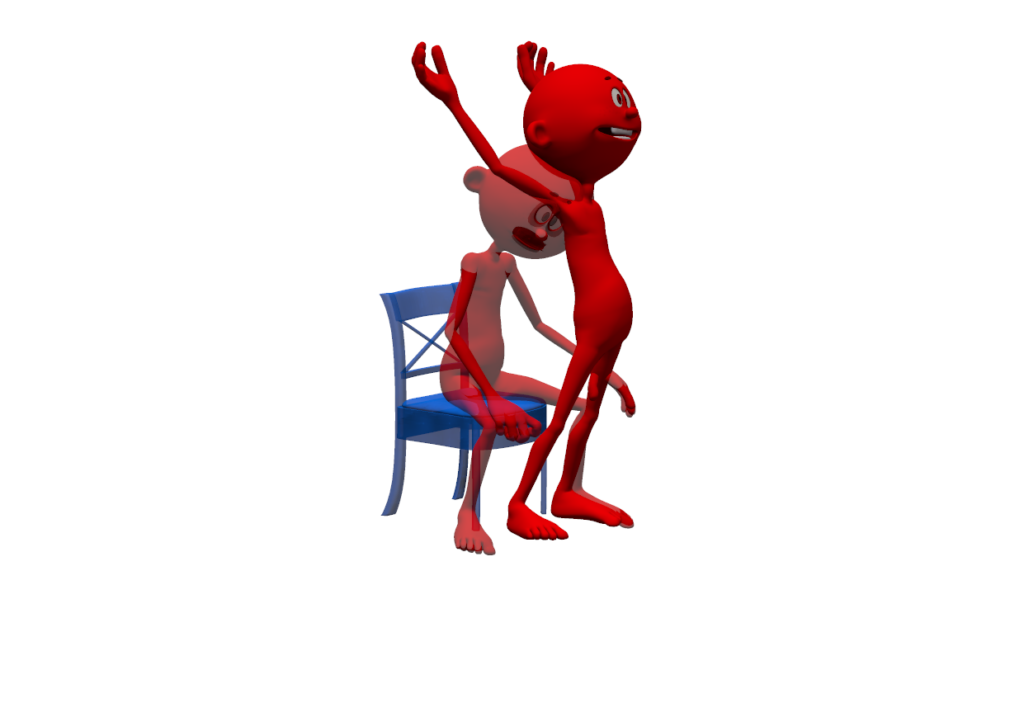Exercise interruptus
The power of pauses
I was doing some prep for a lecture last year – the topic, osteoporosis and exercise – and I came across a curious suggestion in a paper by Srinivasan et al (2002). They tried some low-intensity loading of animal bone, basically by applying a bit of bending load to bones. In that context they found that the low loading had minimal to no effect on bone metabolism – so no change in the animal’s bone density or structure. However – and here’s the cunning thing – by inserting a brief 10s pause between loading cycles they found a ‘potent anabolic stimulus’ for bone. So the loading plus pause, which actually involved less loading (exercise) overall, had a stronger effect on bone metabolism, density and structure. The authors pointed out that although it’s known that bone responds positively to mechanical loading, people affected by bone loss are typically not able to handle or control the higher-impact and more strenuous activities that appropriately load bone.
Although lower-intensity activities are better than nothing and do help solve part of the problem, they do come up a little short in terms of having an effect on bone mass and structure. Srinivasan et al (2002) explain their findings based on the supposed ebb and flow of fluid in bone, stimulating adaptation. The paper did raise a flag for me around the importance of rest pauses in exercise, particularly for individuals who may not be able to tolerate higher intensity or extended duration activities. In a follow-up paper, Gross & Srinivasan (2006) confirmed with human participants that inserting rests reduced the amount and magnitude of mechanical loading required to stimulate bone adaptation.

In an unrelated but vaguely similar intervention, I reviewed a paper last year (Baross et al, 2017) that found 3 x 10s bouts of sub-maximal hand gripping performed during a 30 min treadmill walk, significantly reduced systolic blood pressure, and the change was significantly more than either walking for 30 min or just performing the hand gripping. Folks, that’s only 30 seconds of hand squeezing during a 30-minute walk. Again that’s just doesn’t seem like enough muscular exercise to make a difference, yet it had a seemingly significant effect on resting blood pressure.
This also gets me thinking about research on sitting and standing, where it seems that transitions from sitting to standing could be as meaningful as the total amounts of sitting and standing. Paddy Dempsey (Otago PE grad) and colleagues (2016) looking at diabetic health markers found that brief (3 min) low-intensity exercise interruptions to sitting had a significant impact on those markers. Stephen Fenemor (another Otago PE grad) et al (2016) looking at cardio-metabolic health factors, found that 7hrs of sitting interrupted by 2 min bouts of activity every half hour, provoked energy utilisation comparable to sitting for 7hrs followed by a single 30 min bout of continuous activity. They suggested that combining activity breaks with a longer continuous bout of activity would further enhance energy expenditure.
Seems to me that transitions are the key and it has me wondering about those people who vocationally spend long periods standing or long periods performing low-intensity muscular work – yet they don’t appear to accrue the expected health benefits. Could it be that the monotony and lack of transitions somehow fail to stimulate adaptations?
I wonder whether we might encourage more people to exercise if we could come up with exercise regimes that better suited their fitness levels, rather than expecting people to push themselves hard from the outset, particularly when their base fitness level is low. Well constructed programmes consisting of low-intensity exercise might just work if we inserted pauses or recoveries in there to ‘trick’ the body into thinking it was engaging in some form of harder workout. Might just be enough to get people started. That’s acutely, but it also gets me thinking about the high volume of training that some athletes endure and how important pauses might be for chronic adaptations. Optimal exercise programmes undoubtedly would still require progression of the exercise stress, but perhaps a low density interrupted programme is a way for safe and enjoyable scaffolding someone into a physical activity habit. Just wondering….
Best, Phil
